

The Catholic Patriotic Minute #11: Saint Elizabeth Ann Seton
Catholics For Catholics Special Edition | September 15th, 2025
Saint Elizabeth Ann Seton: The First U.S. Born Saint
Canonized on September 14, 1975, Saint Elizabeth Ann Seton lived a life that is a testament to converting to Catholicism, despite one’s whole community opposing it. Elizabeth knew very well that leaving the Episcopalian Church and joining the Catholic Church would possibly result in her community shunning her. But, the beauty of the Catholic Church and the True Presence of Christ in the Eucharist drew her closer to Christ’s Church until there was no going back. Saint Elizabeth Ann Seton understood that a life, devoid of encountering Christ in the Mass, was not worth living. She lived a life of suffering and service in such a way that sanctified her.
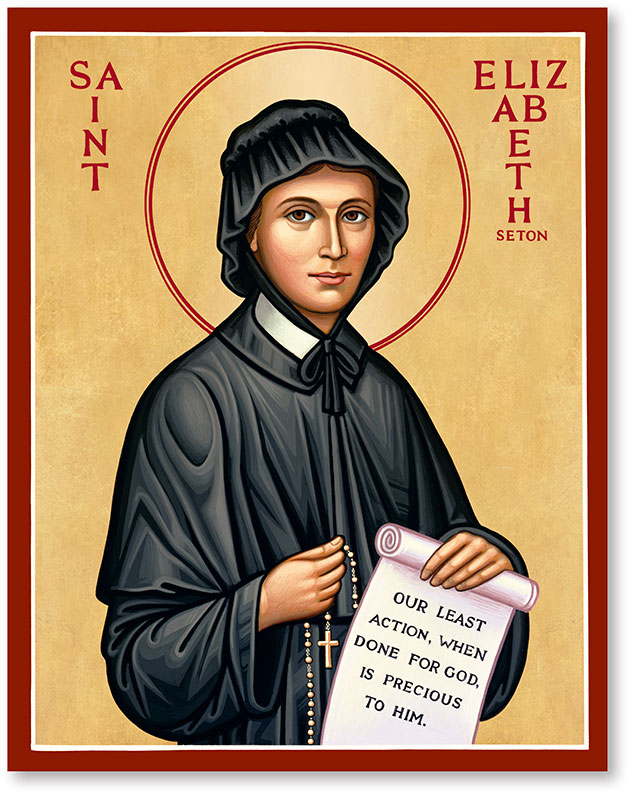
On August 28, 1774, in New York City, Elizabeth Ann Bayley was born to an Anglican family. Her mother, Catherine Charlton, died when Elizabeth was three. Her father, Dr. Richard Bayley, remarried Charlotte Amelia Barclay a year later. Elizabeth and her older sister, Mary, ended up with five half-siblings, whom Elizabeth would help care for. Her early childhood was full with playing piano, learning French, attending balls, and reading. The Bayley family was amongst the respected parts of colonial society that was about to be embroiled in the American Revolutionary War. Interestingly enough, the founding father John Jay saved Dr. Bayley’s life during the Doctor’s Riot.
Her stepmother did teach Elizabeth one prayer that would stick with Elizabeth her whole life. She had Elizabeth memorize Psalm 23, which became a source of comfort for Elizabeth throughout her whole life. Because her parents separated and her stepmother rejected Elizabeth and Mary, the two oldest Bayley girls were often sent to the countryside due to her father’s business trips abroad. The first and fourth verses of Psalm 23–”The LORD is my shepherd; there is nothing I lack. . . Even though I walk through the valley of the shadow of death, I will fear no evil, for you are with me; your rod and your staff comfort me,” would have consoled her especially at this time when she did not have a mother or father present. But, Elizabeth knew she was the daughter of God, and that guided her through a dark period of loneliness.
On January 25, 1794, Elizabeth married William Magee Seton, a founding partner of an import-export mercantile firm. Elizabeth and William attended the Trinity Episcopal Church with families such as the Hamiltons. In fact, both Elizabeth Seton and Eliza Hamilton were founders of The Society for the Relief of Poor Widows with Small Children in 1797. The Setons had five children, two boys and three girls. After William’s father died, William had more responsibility at the mercantile firm, and Elizabeth took in William’s half-siblings. However, in 1801, they declared bankruptcy. The Setons lost their family home and possessions. And then, William’s health declined due to tuberculosis. In a 1803 letter, she wrote that at this point her soul was “sensibly convinced of an entire surrender of itself and all its faculties to God.”
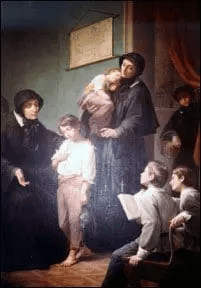
In order to improve William’s condition, Elizabeth, William, and their daughter Anna Maria sailed across the Atlantic in 1803 to Italy, where Filippo Filicchi, a friend of William, lived with his family. Nevertheless, two weeks after a quarantine imposed by the Italian government, William died on December 27. Faced with the harsh reality of being a widow with five children at the age of twenty-nine, Elizabeth was immediately comforted by the Filicchi family. They hosted Elizabeth and her daughter in Livorno, Italy, until they returned to New York City. Little did Elizabeth know that, in the depth of her suffering from her husband’s death, she would encounter Christ in His Church.
The Filicchis introduced Elizabeth to Catholicism, and in turn she asked them questions about their faith. She was especially interested in the Sacred Liturgy and His Real Presence in the Eucharist. She started to pray the Memorare, and she attended Mass at The Church of St. Catherine of Siena in Livorno. Here, she would adore Christ. There is an old plaque at this Church that translates to, “In this church, specifically before this altar, Blessed Elizabeth Ann Seton, in the first part of 1804, when she was still an Anglican, listening several times to the holy Mass, was irresistibly drawn to worship Jesus present in the mystery of the Eucharist, and to be united to His sacrifice.”
Once Elizabeth returned to New York City in the spring of 1804, she cared for her family of six with a terrible financial situation by moving them to a less-expensive area of town. Upon her return, she was met with Anti-Catholic sentiments from her family and friends. In spite of this, she surrendered to God and professed her Catholic faith on March 14, 1805 at St. Peter’s Church in lower Manhattan, and then two weeks later she received First Communion from Bishop John Carroll, the first Bishop for America and a spiritual father for Elizabeth. Her confirmation name was Mary, so that her name, Mary Elizabeth Ann Seton would reflect the mysteries of Salvation.
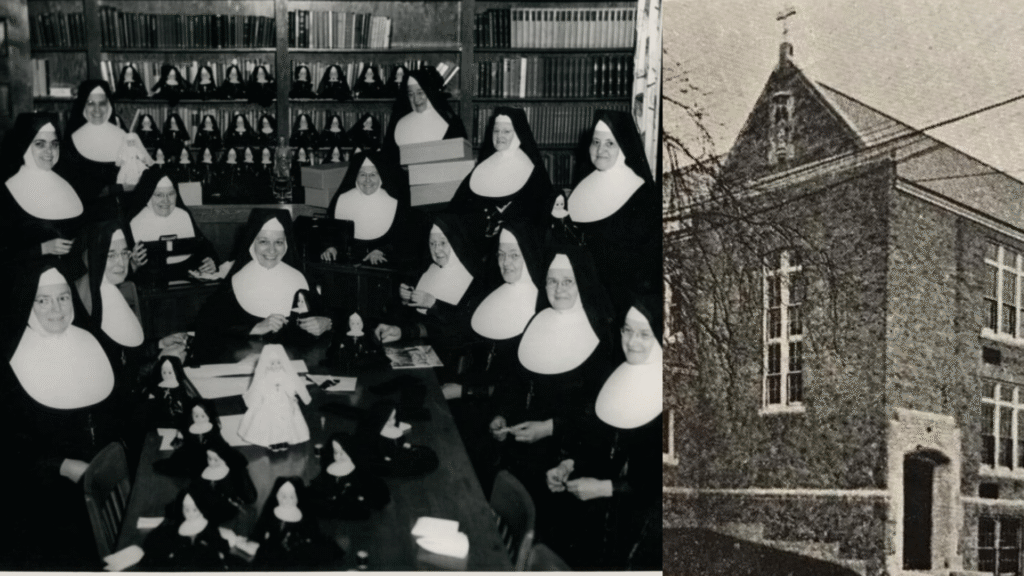
During her time in New York between 1805 and 1808, her attempts at founding schools failed due to widespread Anti-Catholicism. Even her Seton family relatives were weary of her, especially after she influenced her sisters-in-law, Cecilia and Harriet, to profess the Catholic faith. Elizabeth surrendered her worries of how she would care for her children to God. Eventually, her prayers were answered.
Father Louis William Dubourg invited Elizabeth to Baltimore, Maryland, to begin a school for girls, with the hope that a congregation of religious women would lead it one day. On June 16, 1808, Elizabeth arrived in Baltimore, and she served as school mistress at a school, which she formed with the Sulpician priests. The Sulpicians invited women, who were interested in joining a religious community similar to the Daughters of Charity of Paris. On March 25, 1809, Elizabeth pronounced vows of obedience and chastity to Bishop John Carroll, who named her “Mother Seton.”
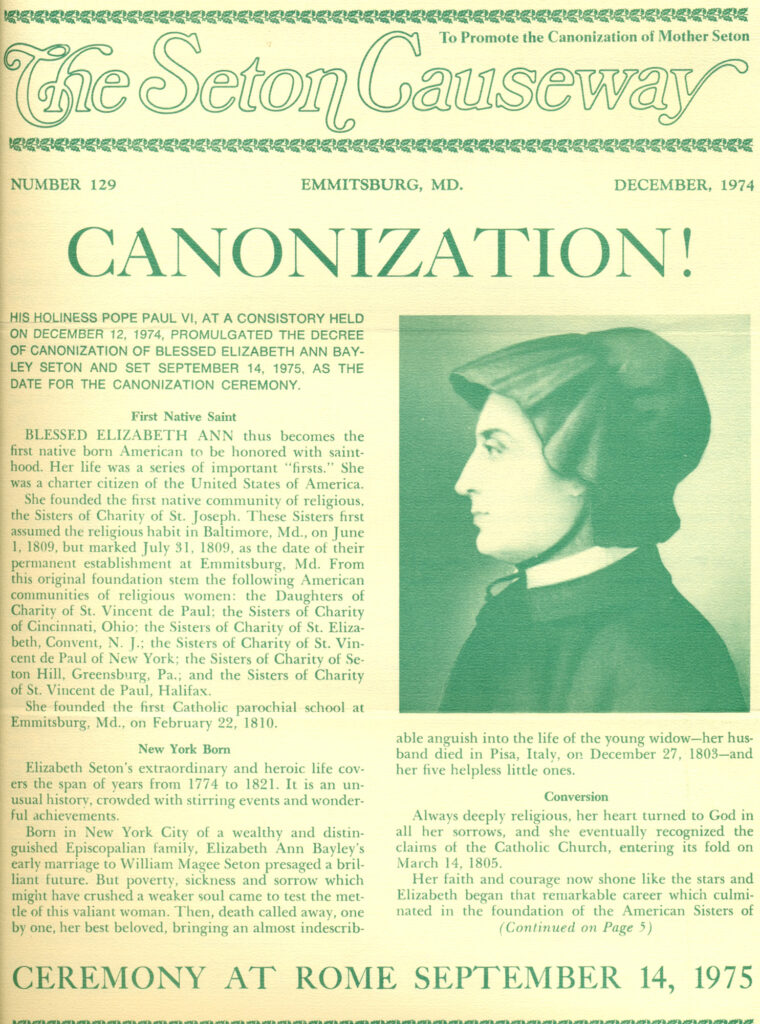
Along with six candidates, Elizabeth moved to Emmitsburg and established the Sisters of Charity of St. Joseph’s on July 31, 1809. Then, on February 22, 1810, she founded St. Joseph’s Free School for girls in need. It was the first free Catholic school, led by religious sisters, in the United States. On May 14, 1810, she began St. Joseph’s Academy, a boarding school. In 1814, along with her sisters, Elizabeth founded a Catholic orphanage in Philadelphia, the first one in the United States.
Every year from 1809 till her death in 1821, Mother Seton was elected by the members of the Sisters of Charity to be their Mother. Mother Seton guided her sisters to embrace the Vincentian spirit, in the tradition of St. Louise de Marillac and St. Vincent de Paul, with the help of Servant of God Simon Gabriel Bruté, her spiritual mentor. From 1809 to 1820, eighty-six out of ninety-eight candidates joined the Sisters of Charity. By the time she died, more than twenty other communities of the Sisters of Charity were operating across the United States.
Mother Seton died from tuberculosis on January 4, 1821. Father Bruté, who brought the Eucharist to her till her last day, wrote of Mother Seton, “O, such a mother! Such faith and love! Such a spirit of true prayer, of true humility, of true self denial in all, of true charity to all!” On September 14, 1975, Mother Seton was canonized by Pope Paul VI as the first saint born in the United States. The Pope proclaimed to American Catholics,
“Elizabeth Ann Seton is a saint. St. Elizabeth Ann Seton is an American. All of us say this with special joy, and with the intention of honoring the land and the nation from which she sprang forth as the first flower in the calendar of the saints. Elizabeth Ann Seton was wholly American! Rejoice for your glorious daughter. Be proud of her. And know how to preserve her fruitful heritage.”
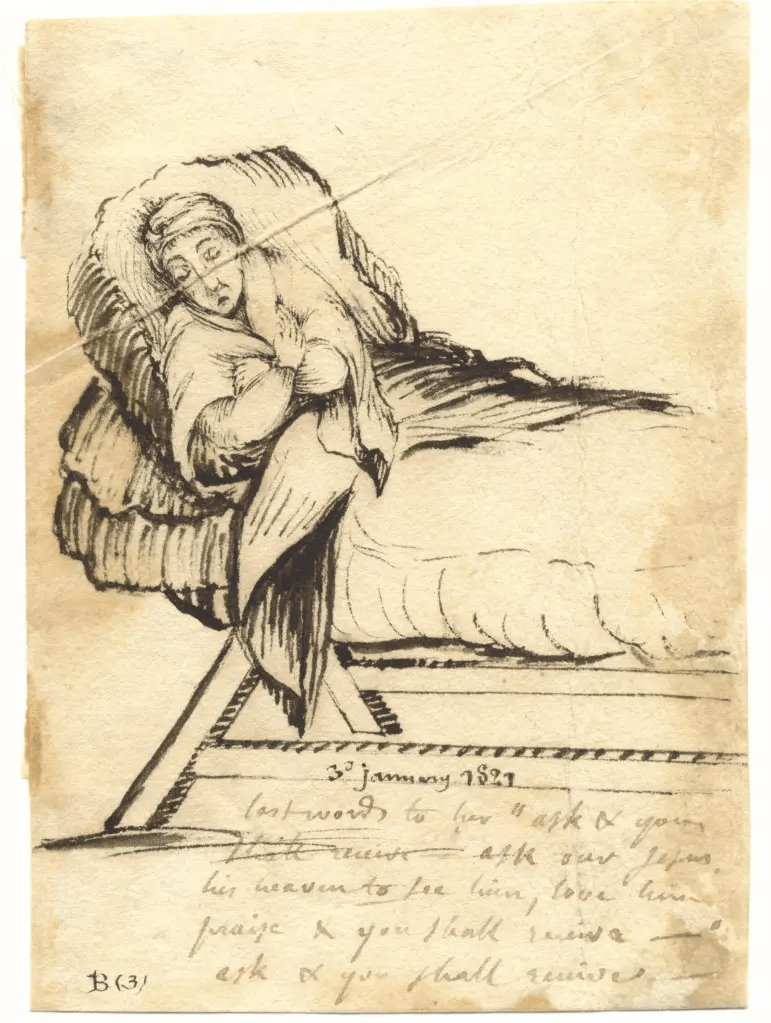
Saint Elizabeth Ann Seton sanctified her life by serving numerous people, including her half-siblings, her husband and his half-siblings, her own children, the children at her schools, and her Sisters of Charity. She became a devout Catholic, in spite of her friends and family being loud opponents of her decision. It is quite fitting that her favorite Psalm 23 ends with the verse, “Indeed, goodness and mercy will pursue me all the days of my life; I will dwell in the house of the LORD for endless days.” Elizabeth found the Lord in the Catholic Church in Italy and made his Church her home in the United States. Now, she dwells in His Home for eternity.
For more Catholic Patriotic Minutes, visit CATHOLICUSA.COM
Save and Share This Catholic Patriotic Minute!
